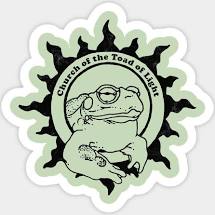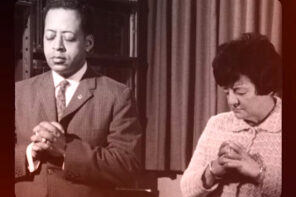If surveyed about the relationship between religion and drugs, I’d wager that a majority would not see any relationship at all. If they did see a relationship, they’d likely view it negatively: drugs and their use, at least the illicit ones, are antithetical to religion. As states have gradually legalized and decriminalized cannabis and other drugs, taboos about their use have likewise relaxed. In some quarters, the discussion has shifted in the opposite direction, as advocates and clinical researchers have touted the therapeutic benefits of cannabis, various hallucinogens, and empathogens, such as MDMA. For those who study religion, this ongoing cultural shift provides new opportunities for thinking about the relationship between religion and drugs.
One of the smarter, more recent contributions to the renewed interest in drugs that should interest scholars is Hamilton’s Pharmacopeia, a Vice production which aired its third season earlier this year on Hulu. Hamilton’s Pharmacopeia follows Hamilton Morris, a filmmaker, journalist, and chemist (and son of documentary filmmaker Errol Morris). The show generally takes a multidisciplinary approach to explore the histories and cultures of drugs, their use, and their chemistry. Each show is dedicated to a particular drug, and the topics explored vary depending on which drug is in focus. In Season 3, Morris devotes episodes to 5-MeO-DMT, methamphetamine, xenon, ibogaine, bufotenine, and LSD. Although the show focuses on users and researches of the drugs in question, Morris often acts as a participant-observer, using the drugs himself to report their effects.
Whatever the drug in question, however, the narrative always seems to circle back to questions relating to religion, in both explicit and inexplicit ways. Morris doesn’t so much present theses about the relationship between religion and drugs but, rather, exhibits the obvious and subtle connections between the two, leaving it up to the viewer to provide their own interpretation. What Morris’s exploration of the connection between the two shows, however, is that religious studies scholars can no longer ignore the connections between religion and drugs.
For instance, in Season 3, Episode 3, titled “Xenon: The Perfect Anesthetic?,” Morris visits a xenon clinic in Prague. At the clinic the noble gas and anesthetic is used to treat health-related problems but also to enhance one’s “spiritual life,” as the clinic’s director puts it. She describes the euphoria the gas produces as a “nourishing, calm energy,” which promotes a “deep peace.” According to her, many users report that they have been “touched by God’s universal love for the first time in their entire life.” The clinic’s website claims that after a number of therapeutic sessions “you are likely to experience a state of deep meditation and a feeling of unconditional love.”
Skeptics may, of course, balk at the equation of a clinical, drug-induced experience with an experience that borders on the mystical, but such claims aren’t out of the ordinary. William James, author of The Varieties of Religious Experience, described his experiments with nitrous oxide, another anesthetic, in similar terms, and argued that we understand such drug-induced experiences as religious experiences.
 Psychedelics purportedly produce similar experiences, as both users and researchers claim. Such is the topic of Season 3, Episode 1, titled “Synthetic Toad Venom Machine.” The episode tells the story of Ken Nelson, aka Albert Most. Nelson is reputedly the first to experiment with the venom of Bufo alvarius, a toad found in the Sonoran Desert whose venom contains the strong psychedelic compound 5-Meo-DMT. Nelson described his experience with the venom as being “completely absorbed in a complex chemical event characterized by an overload of thoughts and perception, brief collapse of the ego, and a loss of the space-time continuum.” He would go on to use the experience to attempt to found a new religion and utopian community called The Church of the Toad of Light.
Psychedelics purportedly produce similar experiences, as both users and researchers claim. Such is the topic of Season 3, Episode 1, titled “Synthetic Toad Venom Machine.” The episode tells the story of Ken Nelson, aka Albert Most. Nelson is reputedly the first to experiment with the venom of Bufo alvarius, a toad found in the Sonoran Desert whose venom contains the strong psychedelic compound 5-Meo-DMT. Nelson described his experience with the venom as being “completely absorbed in a complex chemical event characterized by an overload of thoughts and perception, brief collapse of the ego, and a loss of the space-time continuum.” He would go on to use the experience to attempt to found a new religion and utopian community called The Church of the Toad of Light.
In addition to these individualized, drug-induced religious experiences, the show also focuses on how the use of drugs is embedded within established, cultural practices and throughout ordinary life. Season 3, Episode 4 titled “Synthetic Ibogaine—Natural Tramadol” focuses in part on Bwiti, a syncretic African religion known for its ritual use of psychoactive plants, Iboga in particular. Iboga, which contains the psychoactive chemical ibogaine, is a strong psychedelic which produces, among other things, feelings of dissociation.
Within the context of Bwiti, Iboga is considered a “natural drug from God,” as Queen Mother of the Waters, a Bwiti priestess featured in the episode puts it. Bwiti adherents use the drug ritually for its perceived medicinal value to treat a host of spiritual, psychic, and physical ailments. According to Queen Mother of the Waters, Iboga heals because it “reveal[s] all that’s inside you.”
The episode in particular focuses on its use to treat a man addicted to Tramadol, an opioid pain medication. The elaborate, multi-day purgative ritual he participates in, which includes the ingestion of copious amounts of Iboga, may seem extreme, leaving the viewer wondering about its efficacy. Viewers may be especially skeptical of using a drug to treat a drug abuse problem, especially in light of the dominant abstinence-only approach to addiction. However, in the context of Bwiti, the drug in question is ritualized, demarcated as a religious object with healing properties.
Research confirms many of the assumptions present in such rituals. We’ve also known since the 1960s that ibogaine may be useful for treating addiction, particularly opioid addiction (in fact, back in 2013, popular TV show Homeland included a scene in which a CIA agent used ibogaine to kick heroin). The therapeutic value of ibogaine has attracted the interest of researchers, and ibogaine therapy for addiction is available, albeit not readily, in numerous places outside the United States.
It’s interesting to juxtapose this episode to Episode 2 of Season 3, titled “A Positive Methamphetamine Story.” The show explores methamphetamine use and addiction, in part through the experience of two, diehard methamphetamine users. The episode also follows recovering methamphetamine addicts, who find a cure for their disease in religion, specifically evangelical Christianity.
What’s interesting, here, isn’t so much that religion offers them healing and relief from the ills of drug abuse, it’s their use of the language of drug use and abuse to describe their religious experiences and commitments. As Morris points out in relation to one former user, the latter’s replaced his “addiction to methamphetamine with an addiction to God.” Another former user relates that she now “gets high off the Holy Spirit.” In a word, these former users are now addicted to religion, to Jesus: “you can’t get no higher than this,” as still another former methamphetamine addict states.
In the episode, religion itself, then, becomes a drug, at least for the formerly-addicted. Karl Marx, as is well known, recognized religion’s potential to do just that, in labeling religion “the “opium of the people.” Marx is usually taken to have meant that religion is delusional and dangerous, as it dulls our senses like a drug. Both drugs and religion can, certainly, have negative effects, but the metaphor is more ambivalent. Himself a regular opium user, Marx knew its benefits as well. Religion may be the “opium of the people,” but that’s also because it’s a “protest against real suffering,” “the heart of a heartless world, and the soul of a soulless condition.” For the individuals presented in the episode, religion replaces methamphetamine, providing the “heart” and “soul” they once sought in a chemical substance.
Morris plays with this ambivalence, leaving the relationship between religion and drugs open for multiple interpretations. In this sense, the show raises more questions than it answers, and it’s in this space that scholars, religious practitioners, and other interested parties may find much to appreciate. Drugs and religion, as the show presents and maintains, go together, both historically and in the present. Rather than ignoring that relationship, as scholars have mostly done, we should be asking questions regarding how they go together, and why. As taboos continue to relax, now is as good a time as any to take up the task—and Hamilton’s Pharmacopeia is a good place to start.





